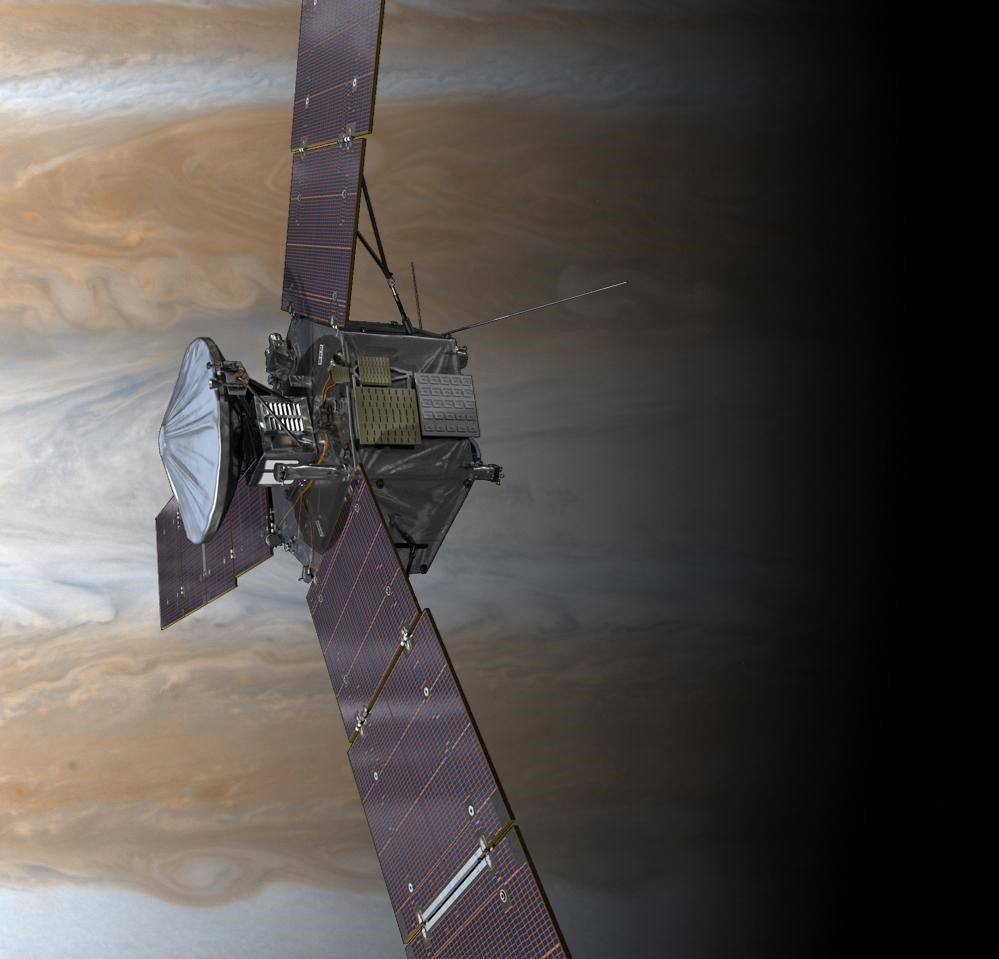Jupiter-Bound NASA Spacecraft Will Swing By Earth Wednesday

A NASA probe will zip by Earth Wednesday (Oct. 9) in a slingshot-like manuever around our planet to build up speed for the long trip to Jupiter.
NASA's 8,000-pound (3,267 kilograms) Juno spacecraft will skim just 350 miles (560 kilometers) above Earth's surface on Wednesday, getting a critical gravity assist more than two years after launching on a circuitous path to the solar system's largest planet.
"When Juno launched, there was not an available rocket powerful enough to send such a heavy spacecraft directly to Jupiter, so the flyby maneuver is an essential part of the mission," officials with the Southwest Research Institute, where Juno principal investigator Scott Bolton is based, explained in a description of the Earth flyby.
"The Atlas 5 rocket provided half of the boost Juno needs to reach Jupiter, and the Earth flyby provides the rest. It's the energy of an extra rocket launch, without the extra rocket," they added.
Wednesday's flyby will boost the spacecraft's speed by about 16,330 mph (26,280 km/h), NASA officials have said.
Preparations for the flyby are occurring while the federal government is shut down and 97 percent of NASA employees have been furloughed. But this situation isn't posing much of a problem for Juno or its mission, team members said.
"The shutdown hasn't affected us except for public affairs events such as press releases," Bolton told SPACE.com via email. "All [operations are] exempted."
Breaking space news, the latest updates on rocket launches, skywatching events and more!
The $1.1 billion Juno mission launched in August 2011 and will arrive at the Jovian system in July 2016. Juno will then circle Jupiter for a full Earth year, studying the giant planet's atmosphere, gravitational field and magnetic field with eight different science instruments.
The spacecraft's observations should yield insights about Jupiter's origin, structure and composition, including whether or not it has a solid core, mission team members have said.
Juno is named after a goddess in Greek and Roman mythology. The god Jupiter (or Zeus, in the Greek version) hid his acts of mischief behind clouds, the story goes, but his wife Juno was able to peer through the veil to see what he was up to.
The Juno spacecraft will be the first solar-powered probe ever to visit the outer solar system. Juno has three large solar arrays, each of which is roughly the size of a tractor-trailer (about 30 feet long by 9 feet wide, or 10 by 2.7 meters).
Follow Mike Wall on Twitter @michaeldwall and Google+. Follow us @Spacedotcom, Facebook or Google+. Originally published on SPACE.com.

Michael Wall is a Senior Space Writer with Space.com and joined the team in 2010. He primarily covers exoplanets, spaceflight and military space, but has been known to dabble in the space art beat. His book about the search for alien life, "Out There," was published on Nov. 13, 2018. Before becoming a science writer, Michael worked as a herpetologist and wildlife biologist. He has a Ph.D. in evolutionary biology from the University of Sydney, Australia, a bachelor's degree from the University of Arizona, and a graduate certificate in science writing from the University of California, Santa Cruz. To find out what his latest project is, you can follow Michael on Twitter.
